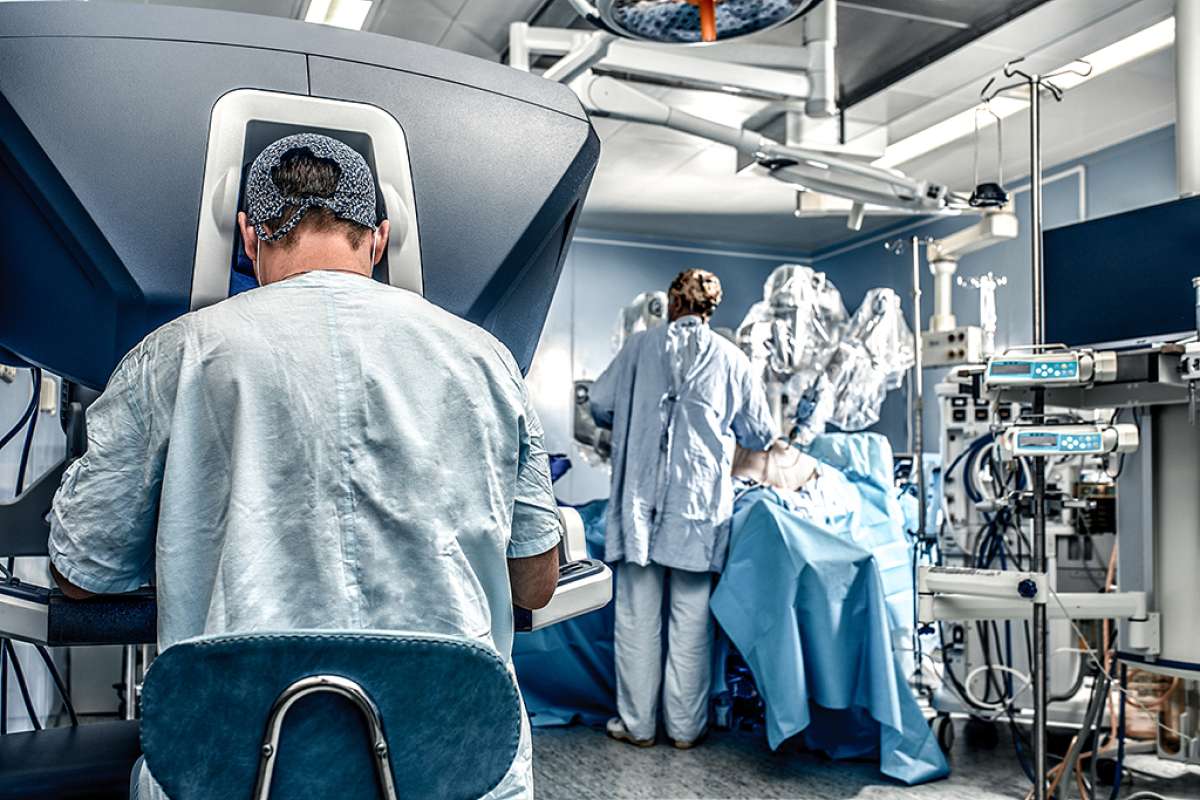When you hear about someone having a heart bypass, you probably think about it as a major open-heart procedure. But with new technologies and techniques, opening up the chest isn’t always necessary.
Thanks to innovations in minimally invasive procedures in the last decade and robotic technology, some heart bypasses—also called coronary artery bypasses—can now be performed with robotic assistance. When performed in that way, it is considered a closed-chest procedure, rather than open-heart.
Wondering how such a complex cardiovascular procedure can be performed without opening up the chest? Keep reading to learn more.
What happens during a robotic heart bypass?
During a traditional coronary artery bypass graft, or CABG, a cardiothoracic surgeon makes a long incision (between 5 and 8 inches) in the middle of the chest and surgically opens the sternum to allow access to the heart. The procedure involves implanting a transplanted blood vessel to allow blood to “bypass” a blocked artery. Afterward, the sternum is stabilized with wire or surgical plates and screws, and the skin is stitched and glued shut.
Because of the invasive nature of a traditional heart bypass, recovery can be lengthy and difficult. It isn’t uncommon to experience discomfort related to the sternotomy (the opening of the sternum) itself in the weeks and months following the procedure.
Robotic technology now provides some patients a much less invasive option at select locations across the country, including Georgia Heart Institute. During a procedure known as minimally invasive robotic coronary artery bypass grafting, the mammary artery is detached from the chest wall with robotic assistance. Small incisions are made in the chest, and the mammary artery is “grafted” onto the heart by a surgeon to bypass a blocked artery, restoring healthy blood flow.
The process of removing the mammary artery is done robotically, using tiny instruments guided in real-time by a surgeon seated at a console a small distance away from the patient. Because the instruments for removing the artery are guided robotically rather than by a surgeon’s actual hands inside the patient’s body, the procedure requires only small incisions—and the sternum remains intact.
The procedure can be performed using a heart-lung bypass machine or without one, depending on the specific case and the patient’s anatomy. In most cases, it is performed on a beating heart.
Minimally invasive robotic coronary artery bypass grafting is typically done in conjunction with percutaneous coronary intervention, also called PCI or angioplasty. During that procedure, which is performed up to 45 days later, a cardiologist will insert a tiny tube called a catheter into the body, usually through the groin, and weave it up to the site of any remaining coronary artery blockages.
Once the catheter is in place, a balloon on its tip is inflated, pushing plaque to the artery walls, which restores blood flow. After the blockage is cleared, a stent is placed into the artery to keep it open.
Data show that this approach to treating coronary artery blockages—the combination of minimally invasive robotic coronary artery bypass grafting and angioplasty with stenting—offers better outcomes for many patients than angioplasty and stenting alone.
Is everyone a candidate for robotic heart bypass?
Robotic heart bypass is not an option for all patients at this point, but it may be used increasingly in the years to come.
The procedure described above offers many benefits for patients, including less hospitalization time, a reduced risk of complications, less blood loss, less pain, and a shorter recovery time. In cases where a heart-lung bypass is not needed, there are even more benefits. Most patients who undergo the procedure are able to return home within three to four days after surgery and resume normal activities within a couple weeks.
There are, however, a number of factors considered when determining whether the procedure can be used in place of a traditional heart bypass. A team of cardiovascular, interventional cardiology and cardiothoracic specialists will consider your overall health, how many arteries are blocked and in need of bypass, and whether you’ve had previous heart surgeries, among other things.
Next steps
When you need some type of heart surgery, you want a team of experts. You’ll find that at Georgia Heart Institute. The surgeons of Northeast Georgia Physicians Group Cardiovascular & Thoracic Surgery, in partnership with Georgia Heart Institute, have years of experience performing complex procedures including heart bypass.



